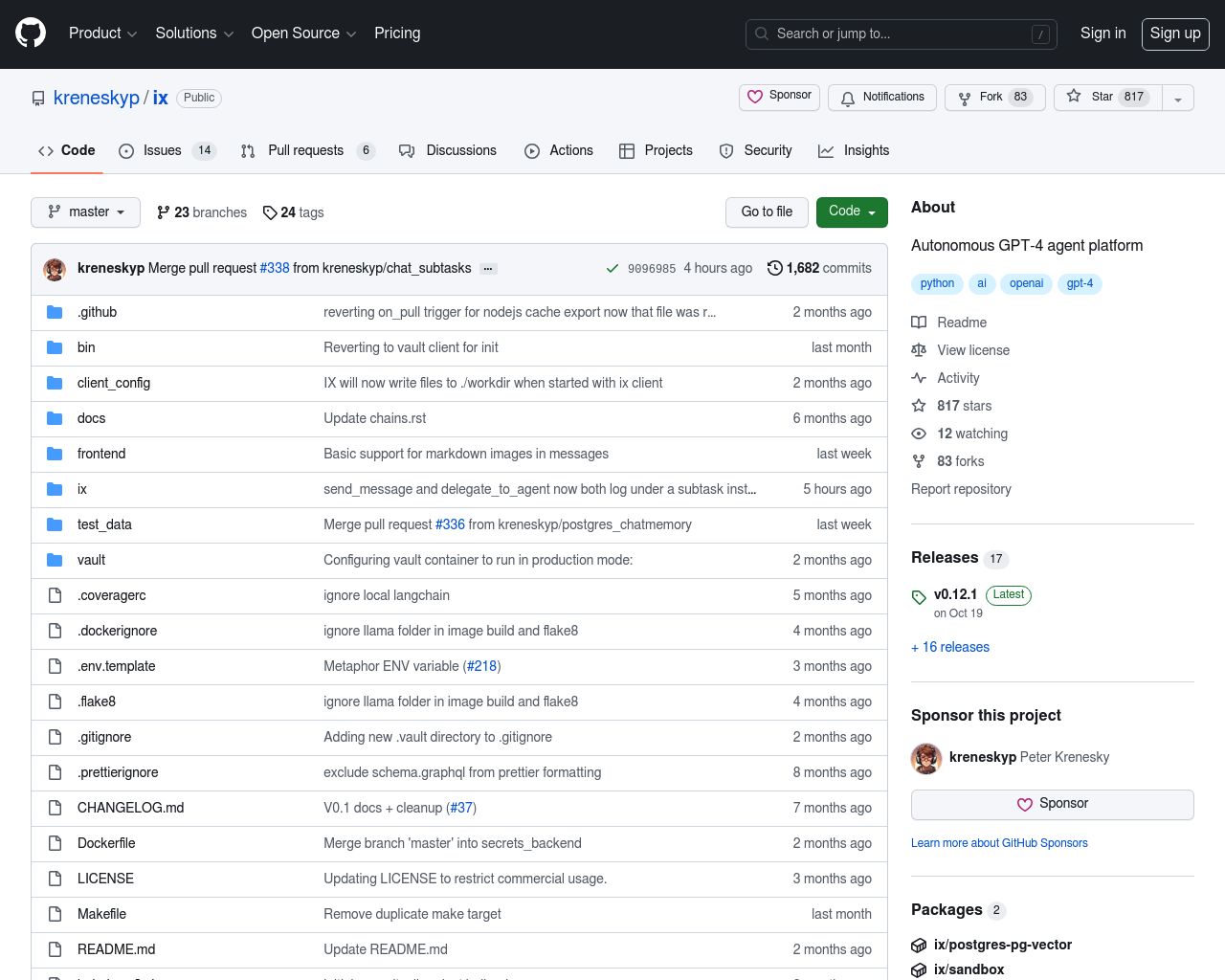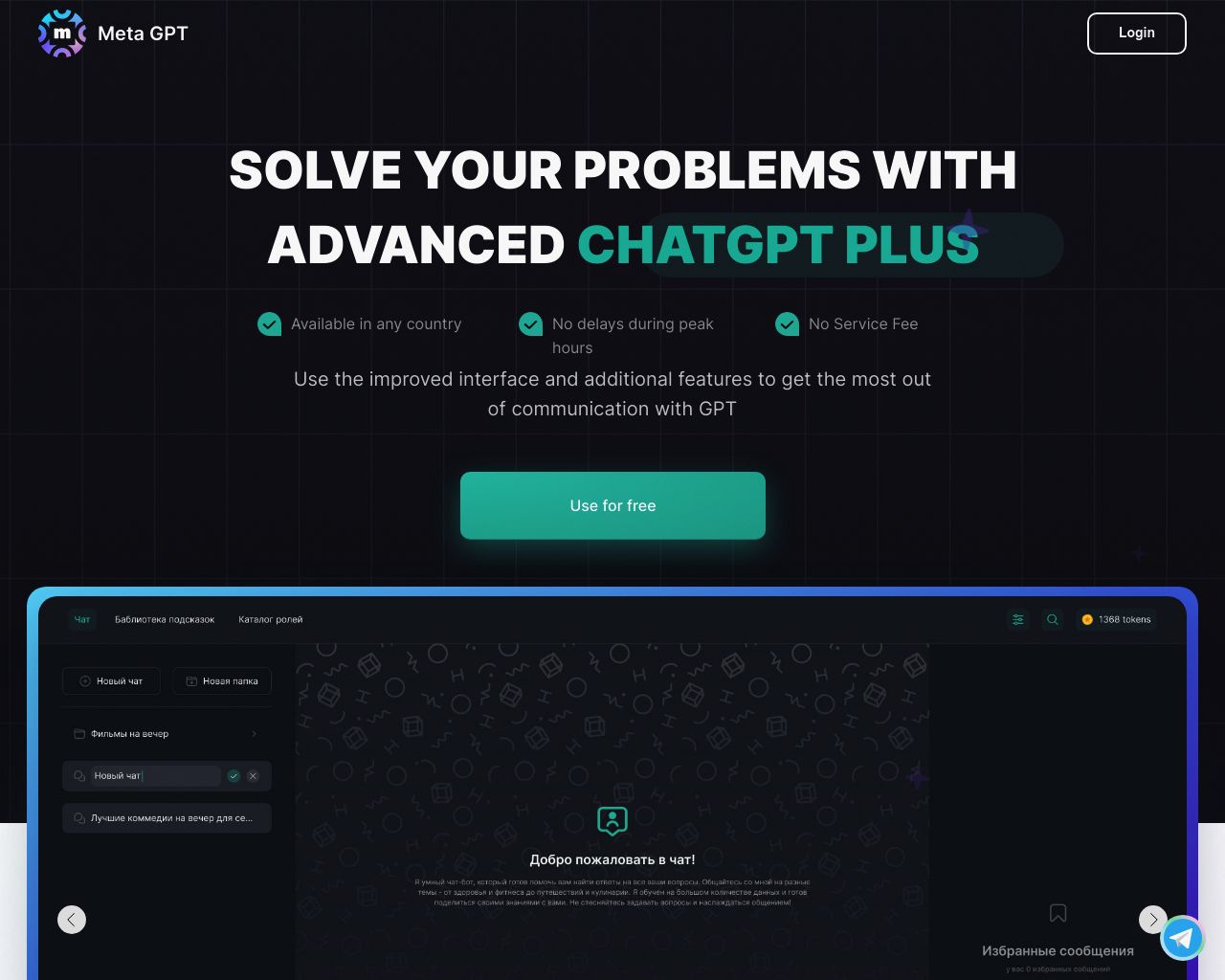IX And MetaGPT: An In-depth Analysis and Comparison
AI agent platforms revolutionize software development and task automation, offering powerful tools for businesses and developers alike. Agent iX and MetaGPT represent two innovative approaches in this rapidly evolving field, each with unique strengths and limitations. This comparison explores their core features, development philosophies, and practical applications, contrasting them with SmythOS — a comprehensive solution that addresses key enterprise needs. By examining these platforms side-by-side, readers will gain valuable insights into the current state of AI agent technology and make informed decisions about which solution best fits their specific requirements and development goals.
Agent iX Overview
Agent iX revolutionizes AI development with its open-source platform for creating and managing autonomous agents. The system empowers developers to build intelligent assistants capable of handling complex tasks across various domains.
At its core, Agent iX offers a visual no-code editor that simplifies agent creation. Users connect nodes in a graph to design agent workflows, enabling rapid prototyping and testing without extensive coding knowledge. This approach democratizes AI development, allowing both seasoned programmers and newcomers to craft sophisticated agents.
Agent iX offers a visual no-code editor that simplifies agent creation. Users connect nodes in a graph to design agent workflows, enabling rapid prototyping and testing without extensive coding knowledge.


The platform shines in its support for collaborative AI. Agent iX enables multiple agents to run in parallel and communicate, fostering teamwork among AI entities. This feature opens up possibilities for complex problem-solving and task delegation, mirroring human team dynamics in the digital realm.
Agent iX enables multiple agents to run in parallel and communicate, fostering teamwork among AI entities. This feature opens up possibilities for complex problem-solving and task delegation…
Agent iX’s flexibility extends to its model support. The platform integrates with leading AI models from OpenAI, Google PaLM, Anthropic, and Llama, giving users access to cutting-edge language processing capabilities. This versatility ensures that agents can leverage the most appropriate model for their specific tasks.
While Agent iX offers powerful features, it lacks some enterprise-grade capabilities. The platform doesn’t provide built-in solutions for data encryption, constrained alignment, or comprehensive audit logs. These omissions may limit its suitability for organizations with strict security and compliance requirements. Additionally, the absence of specific features like agent work scheduling and deployment as webhooks might require users to implement custom solutions for certain use cases.
MetaGPT Overview
MetaGPT revolutionizes multi-agent collaboration in AI by combining human Standardized Operating Procedures (SOPs) with advanced Large Language Models (LLMs). This open-source framework simulates a software company’s structure, assigning distinct roles to AI agents such as product managers, architects, and engineers.
MetaGPT operates on the principle “Code = SOP(Team),” integrating established human workflows into AI processes. This approach enhances the consistency and reliability of agent outputs, particularly in complex software development tasks.


The platform’s unique assembly line paradigm breaks tasks into manageable subtasks, each handled by specialized agents. This method ensures precise contributions from each agent, resulting in more robust solutions. MetaGPT also generates comprehensive documentation throughout the development process, enhancing the final code’s quality and facilitating better human-AI interaction.
MetaGPT revolutionizes multi-agent collaboration in AI by combining human Standardized Operating Procedures (SOPs) with advanced Large Language Models (LLMs).
MetaGPT’s vision centers on establishing a new standard in AI collaboration by leveraging human-like SOPs and structured communication protocols. This framework aims to tackle increasingly complex tasks across various domains, expanding the capabilities of AI agents.
While MetaGPT offers innovative approaches to AI collaboration, it faces challenges in areas such as scalability and user-friendliness. The platform’s focus on replicating human workflows in AI processes may limit its flexibility in certain applications. Additionally, the learning curve for effectively utilizing MetaGPT’s full capabilities could be steep for users without a strong background in software development or AI.
MetaGPT’s integration capabilities with existing tools and systems remain somewhat limited. While it supports multiple foundation models like OpenAI and Google PaLM, it lacks explicit support for popular AI development tools and platforms, potentially restricting its adaptability in diverse tech ecosystems.
Feature Comparison
Agent iX and MetaGPT offer distinct approaches to AI agent development, with notable differences in their core components and security features. Agent iX provides a visual no-code editor that simplifies agent creation, allowing users to design workflows by connecting nodes in a graph. This intuitive interface democratizes AI development, making it accessible to both experienced programmers and newcomers. In contrast, MetaGPT focuses on simulating a software company structure, assigning specific roles to AI agents such as product managers, architects, and engineers. While this approach enhances collaboration among AI entities, it may present a steeper learning curve for users unfamiliar with software development processes.
In terms of security, Agent iX lacks built-in solutions for data encryption and constrained alignment. This gap could limit its suitability for organizations with strict security requirements. MetaGPT, while innovative in its use of Standardized Operating Procedures (SOPs), also does not explicitly mention advanced security features. SmythOS, however, excels in this area by offering robust data encryption, OAuth integration, and IP control, making it a more secure choice for enterprise-level deployments.
Regarding scalability and deployment options, Agent iX supports multiple environments and allows for horizontal scaling to accommodate parallel agent operations. MetaGPT’s assembly line paradigm enables breaking down complex tasks into manageable subtasks, potentially enhancing scalability. SmythOS surpasses both by offering a comprehensive suite of deployment options, including API, webhook, site chat, and scheduled agent functionalities, coupled with advanced scalability features that cater to diverse business needs.
Feature Comparison Table
| Agent iX | MetaGPT | SmythOS | |
|---|---|---|---|
| CORE FEATURES | |||
| Visual Builder | ✅ | ❌ | ✅ |
| No-Code Options | ✅ | ❌ | ✅ |
| Memory & Context | ❌ | ✅ | ✅ |
| Explainability & Transparency | ❌ | ✅ | ✅ |
| Audit Logs for Analytics | ❌ | ✅ | ✅ |
| SECURITY | |||
| Constrained Alignment | ❌ | ✅ | ✅ |
| IP Control | ✅ | ❌ | ✅ |
| COMPONENTS | |||
| Data Lakes | ❌ | ❌ | ✅ |
| DEPLOYMENT OPTIONS (EMBODIMENTS) | |||
| Staging Domains | ❌ | ❌ | ✅ |
| Deploy as Scheduled Agent | ❌ | ✅ | ✅ |
| DATA LAKE SUPPORT | |||
| Hosted Vector Database | ✅ | ❌ | ✅ |
| Sitemap Crawler | ❌ | ❌ | ✅ |
| YouTube Transcript Crawler | ❌ | ❌ | ✅ |
Best Alternative to Agent iX and MetaGPT
SmythOS stands out as the superior alternative to Agent iX and MetaGPT, offering a comprehensive and user-friendly platform for AI agent development. Our drag-and-drop interface simplifies the creation of complex AI workflows, making advanced AI functionalities accessible to users with varying levels of technical expertise. Unlike Agent iX’s limited no-code options and MetaGPT’s steep learning curve, SmythOS democratizes AI development, allowing users to focus on innovation rather than wrestling with complex coding requirements.
SmythOS stands out as the superior alternative to Agent iX and MetaGPT, offering a comprehensive and user-friendly platform for AI agent development.
We excel in providing a robust security framework, addressing a critical gap in both Agent iX and MetaGPT. SmythOS incorporates advanced features such as data encryption, OAuth integration, and IP control, making it the ideal choice for enterprise-level deployments where data protection is paramount. This comprehensive security approach ensures that organizations can leverage AI capabilities without compromising on data integrity or compliance requirements.
SmythOS offers unparalleled versatility in deployment options, surpassing both Agent iX and MetaGPT. Our platform supports deployment as APIs, webhooks, site chats, scheduled agents, and even GPT integrations. This flexibility allows users to seamlessly incorporate AI agents into existing workflows and systems, maximizing the impact of AI across various business processes. Additionally, our scalability features ensure that SmythOS can grow with your organization’s needs, from small-scale projects to enterprise-wide implementations.
SmythOS offers unparalleled versatility in deployment options… Our platform supports deployment as APIs, webhooks, site chats, scheduled agents, and even GPT integrations.
Our platform’s extensive integration ecosystem sets it apart from competitors. While Agent iX and MetaGPT offer limited integration capabilities, SmythOS supports a wide array of AI models, APIs, and tools, including popular services like Slack, Trello, and GitHub. This extensive integration support, coupled with our pre-built API connectors and templates, significantly reduces setup time and allows users to create powerful, interconnected AI solutions that drive real business value.
By choosing SmythOS, users gain access to a comprehensive suite of features that enable the creation of sophisticated, secure, and scalable AI agents. Our platform’s intuitive design, coupled with its advanced capabilities, makes it the ideal choice for businesses and developers looking to harness the full potential of AI technology. With SmythOS, we’re not just offering a tool; we’re providing a gateway to unleash an AI-driven revolution in productivity and innovation across industries.
Conclusion
Agent iX and MetaGPT offer innovative approaches to AI development, each with unique strengths. Agent iX’s visual no-code editor democratizes AI creation, while MetaGPT’s simulation of software company structures enhances multi-agent collaboration. However, both platforms have limitations in enterprise-grade features and scalability.
SmythOS stands out as the superior choice, offering a comprehensive suite of features that address the shortcomings of its competitors. Our platform combines user-friendly design with robust security measures, including data encryption and OAuth integration. SmythOS’s versatility shines through its extensive deployment options, from APIs and webhooks to site chats and scheduled agents, catering to diverse business needs.
Unlike Agent iX and MetaGPT, SmythOS provides a seamless blend of accessibility and advanced capabilities. We offer a drag-and-drop interface for easy agent creation, coupled with powerful features like multimodal support, problem-solving capabilities, and multi-agent collaboration. Our platform’s scalability and integration with over 300,000 APIs and tools make it adaptable to any business environment.
Experience the future of AI development with SmythOS. Create a free account to explore our platform’s full potential. Discover our diverse range of AI-powered agent templates to jumpstart your projects, or dive into our comprehensive documentation for in-depth insights. Elevate your AI capabilities and transform your workflow with SmythOS – where innovation meets efficiency.
Last updated:
Disclaimer: The information presented in this article is for general informational purposes only and is provided as is. While we strive to keep the content up-to-date and accurate, we make no representations or warranties of any kind, express or implied, about the completeness, accuracy, reliability, suitability, or availability of the information contained in this article.
Any reliance you place on such information is strictly at your own risk. We reserve the right to make additions, deletions, or modifications to the contents of this article at any time without prior notice.
In no event will we be liable for any loss or damage including without limitation, indirect or consequential loss or damage, or any loss or damage whatsoever arising from loss of data, profits, or any other loss not specified herein arising out of, or in connection with, the use of this article.
Despite our best efforts, this article may contain oversights, errors, or omissions. If you notice any inaccuracies or have concerns about the content, please report them through our content feedback form. Your input helps us maintain the quality and reliability of our information.
